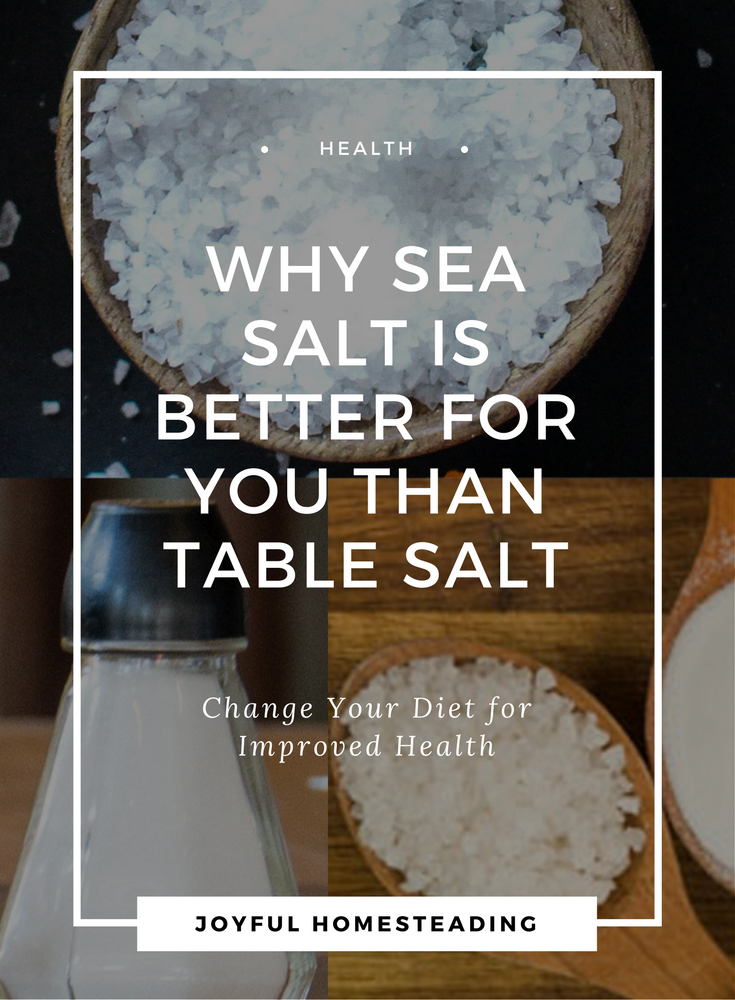Sea Salt vs Table Salt
Sea salt vs table salt; so what's the difference? The answer is lower blood pressure and better health can be yours by adding sea salt to your diet on a regular basis.

Salt is crucial to our survival and helps with a number of functions in the human body, including nerve impulses, muscle contraction, and the movement of nutrients into our cells.
You can get salt from a number of ways, but not all salts are alike, and some salts are better for you than others.

The four main types of salt are table salt, kosher salt, sea salt and iodized salt (table salt with iodine added in).
Table Salt
Table salt is made up of 99.9% sodium chloride and is salt that has been mined, heat-blasted and chemically treated.
All other minerals have been stripped from it and usually anti-caking agents are also added to make the salt free-flowing.
Later on, iodine was added to table salt to help prevent such diseases
as hypothyroidism, pregnancy-related problems and an enlarged thyroid.
Sea Salt
Sea salt is simple, unrefined salt created by evaporating sea water. Typically sea water is channeled into protected, man-made pools and allowed to dry under the sun. Sea salt is about 98 percent sodium chloride and has other valuable minerals such as sulfur, iron, magnesium and other trace elements, providing important nutrients.
What's the Difference?
One of the benefits of sea salt vs table salt is your body will process sea salt more naturally and it won't raise your blood pressure the way table salt would. There are also many health benefits associated with sea salt, including helping your kidneys, adrenal glands and liver work more efficiently and strengthening your immune system.
Get Your Iodine
If you choose to use sea salt, you will need to either purchase an iodized sea salt or use a kelp supplement (find it online here). Add kelp powder to your next soup recipe if you want to get a more natural form of iodine (find kelp powder online here).
A great way to support your thyroid is to use a kelp supplement like this one.
How Does it Taste?
Taste is, of course, an important factor when considering sea salt vs table salt, and because sea salt has other minerals in it besides sodium chloride, you may find the taste less salty than with regular table salt.
Also while table salt will be pure white, sea salt may be gray, white, red, or even black in color. You can even use Himalayan pink salt, although that is a mineral salt harvested from the Himalayan Mountains rather than the sea.








New! Comments
Have your say about what you just read! Leave me a comment in the box below.